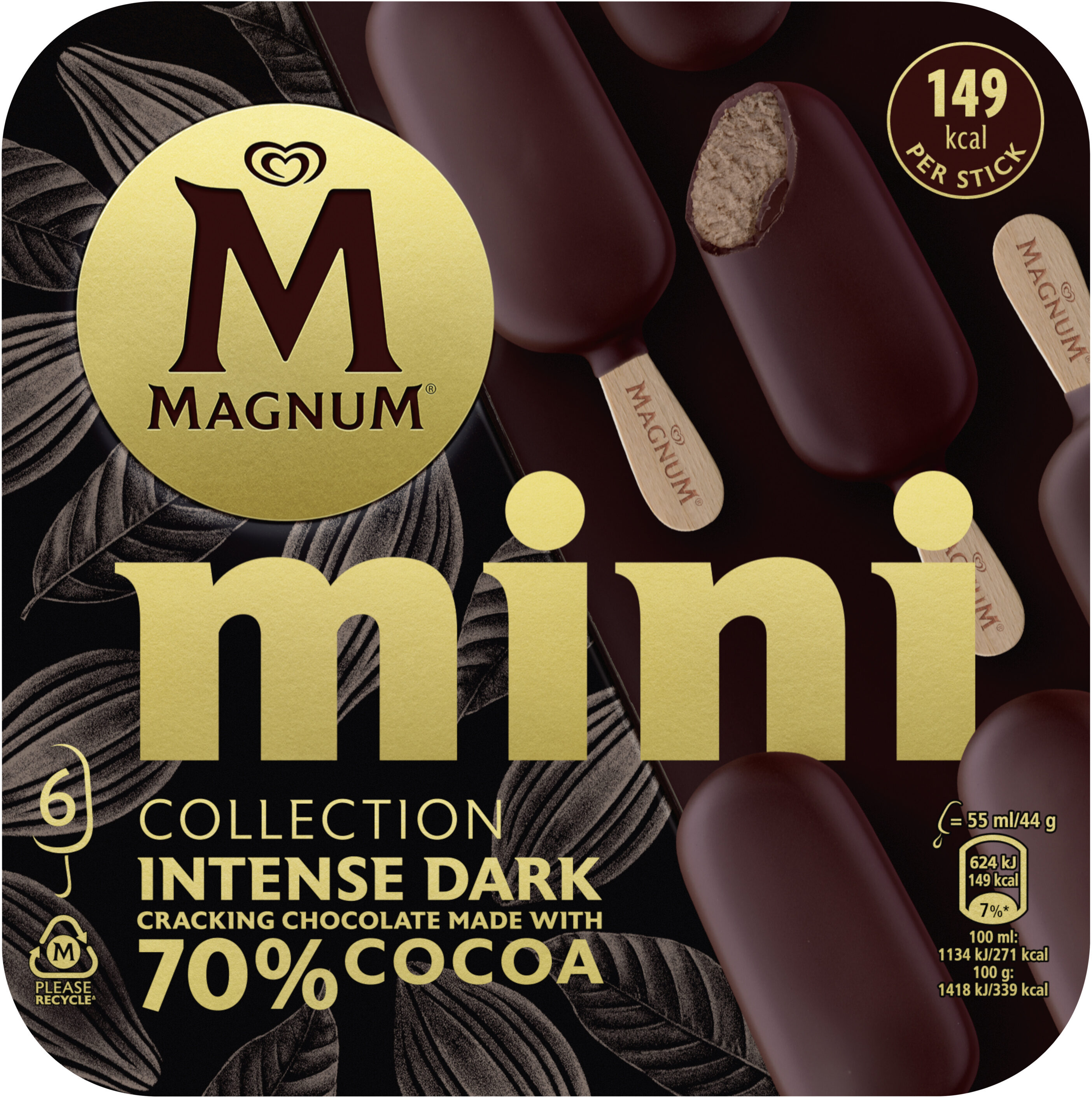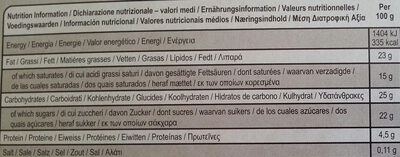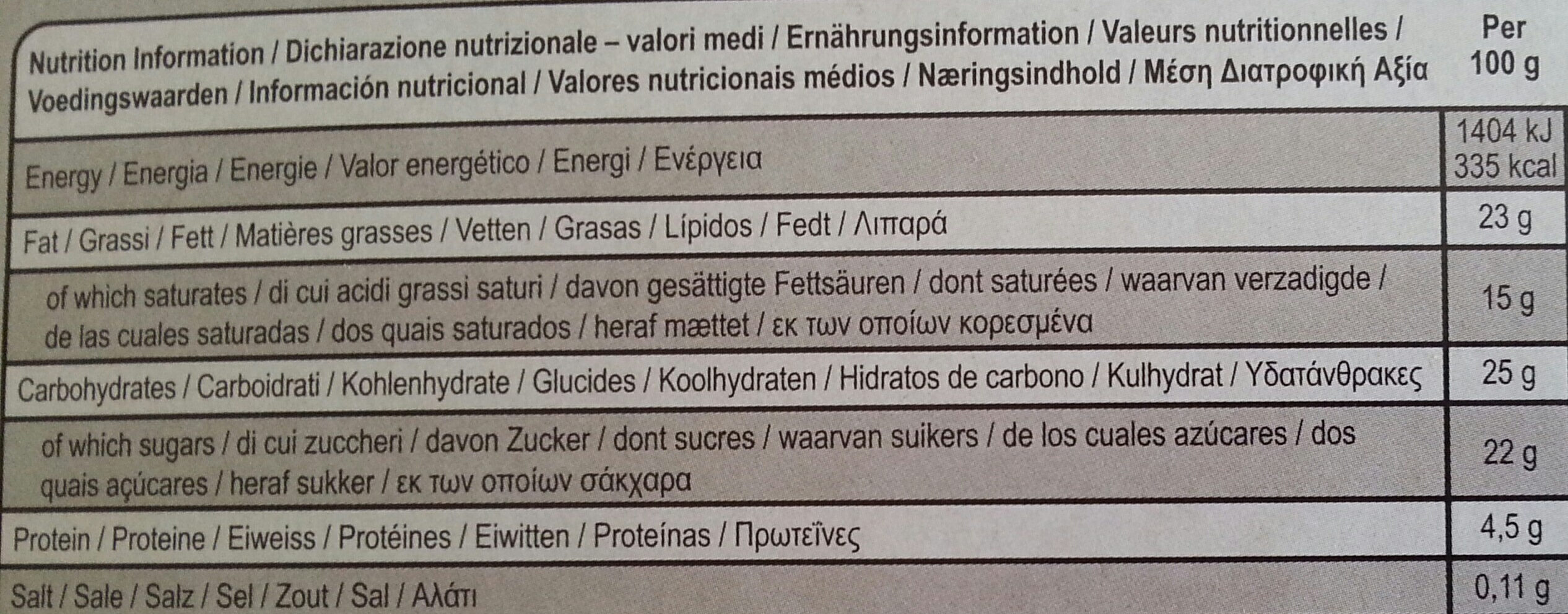Magnum Glace Bâtonnet Mini Chocolat Noir Intense 6x55ml - 264 g
This product page is not complete. You can help to complete it by editing it and adding more data from the photos we have, or by taking more photos using the app for Android or iPhone/iPad. Thank you!
×
Some of the data for this product has been provided directly by the manufacturer Unilever France.
Barcode: 8714100637562 (EAN / EAN-13)
Common name: Milk chocolate ice-cream coated with dark chocolate (33%) (3% milk chocolate in milk chocolate ice-cream)
Quantity: 264 g
Packaging: Plastic, Box, Cardboard, Film, Frozen, Wrapper
Brands: Magnum
Categories: Desserts, Frozen foods, Frozen desserts, Ice creams and sorbets, Ice creams, Ice cream bars, Chocolate ice cream bars, fr:Mini Batonnet Glace
Labels, certifications, awards:
No gluten, Green Dot, Pure cocoa butter, Rainforest Alliance, Triman


Origin of the product and/or its ingredients: Hongrie
Stores: Delhaize, Woolworths, Coles
Countries where sold: Australia, Belgium, France, Germany, Spain
Matching with your preferences
Environment
Carbon footprint
Packaging
Transportation
Labels
Other information
Preparation: Sortez vos glaces du congélateur quelques minutes avant de les déguster, afin de profiter pleinement de leurs saveurs.
Conservation conditions: À conserver à -18°C.
Customer service: Magnum Relation Consommateurs, Unilever France, 20 rue des Deux Gares 92842 Rueil-Malmaison Cedex
Report a problem
Data sources
The manufacturer Unilever France uses Equadis to automatically transmit data and photos for its products.
Product added on by kiliweb
Last edit of product page on by hotonics.
Product page also edited by acuario, archanox, countrybot, elcoco, musarana, openfoodfacts-contributors, org-app-elcoco, org-unilever-france-gms, packbot, prepperapp, tacite, tacite-mass-editor, unilever-france, yuka.SFBzU0xwdzRwYU1Bb2NRQjBSZnUwL043NDZDSFIweUdldU1CSVE9PQ, yuka.SGZvZUxQb00rZHdrdk1ZaXd6R0x4NE5vbDdtR2YyRHVHOVk0SVE9PQ.
Last check of product page on by tacite.











